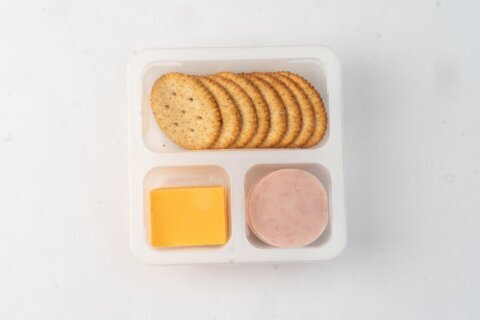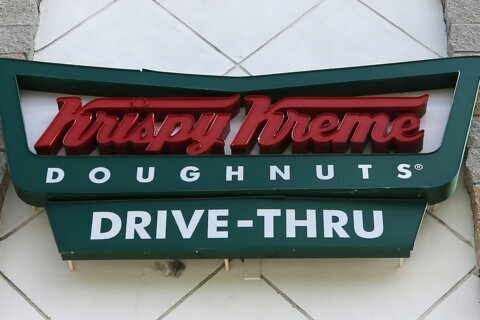WASHINGTON – If you have a food lover on your holiday gift list, chances are you’ve encountered endless options among cookbooks. But this year, a few stand out — including Sean Brock’s “Heritage.”
Brock is the chef behind Charleston’s famed Husk and McCrady’s restaurants, and the author of “Heritage,” a book that chronicles his lifelong obsession with Southern food.
The book’s photos, alone, are excuse enough to make the purchase, but it’s the accompanying
stories and recipes that set “Heritage” apart from its peers. Rather than reading like a traditional
cookbook, “Heritage” reads more like a memoir — a tale of Brock’s culinary experiences.
Brock grew up in southern Virginia, where eating out at restaurants was rarely an option. “We
grew everything; we fished, we hunted — we saw where food came from, and that was huge for me,”
Brock says. “That’s when I really fell in love with food, because I had my hands in it all day.”
After high school, Brock attended culinary school in Charleston, South Carolina. Charleston was
where he started in his profession. It’s also where his eyes — and taste buds — were opened to a new category of cuisine.
“[Charleston] was where I discovered this whole new world — an insanely different cuisine, based on the water, on this coastal way of living,” Brock says. “All of the sudden, I had something new to be fascinated with.”
Since moving to Charleston, Brock has made it his mission to study low-country cuisine and its history.
“I think it’s really this journey of trying to understand the food that appeals to you and means something to you. The food and culture that surrounds you is a big part of your life.”
Brock explains that low-country cooking is a unique combination of European, Native American and
West African cuisines. “You take those cultural influences and you add them to the ingredients that thrive and belong in the low country — the plants and things that just do well there and have a history there.”
In “Heritage,” this regional history is plated up in the form of dishes such as Hoppin’ John,
home-fried chicken, creamed corn, standing rib roast and Husk’s famous pig-ear lettuce wraps.
The last few chapters of the book detail preserving and dessert. Readers can expect everything from sunchoke relish and pickles, to “these bold, Southern desserts that were always on the counter or always showed up.”
If the recipes sound like they are a few degrees of difficulty above the average home chef, Brock says not to be discouraged. He designed “Heritage” to appeal to everyone, “from a 10-year-old to a
professional chef.”
Just because Brock wrote the book on Southern food doesn’t mean he’s done. Since the publication of “Heritage,” he’s turned his attention to further exploring the culinary roots of Appalachia.
“I will always be writing something for the rest of my life,” Brock says about writing on Southern food.
“They call it soul food for a reason. It’s just good for you; it makes you feel good.”
Recipe: Sean Brock’s Cracklin’ Cornbread
Excerpted from “Heritage,” by Sean Brock (Artisan Books). Copyright © 2014.
My favorite ball cap, made by Billy Reid, has a patch on the front that reads “Make Cornbread, Not
War.” I’m drawn to it because cornbread is a sacred thing in the South, almost a way of life. But
cornbread, like barbecue, can be the subject of great debate among Southerners. Flour or no flour?
Sugar or no sugar? Is there an egg involved? All are legitimate questions.
When we opened Husk, I knew that we had to serve cornbread. I also knew that there is a lot of bad cornbread out there in the restaurant world, usually cooked before service and reheated, or held in a warming drawer. I won’t touch that stuff because, yes, I am a cornbread snob.
My cornbread has no flour and no sugar. It has the tang of good buttermilk and a little smoke from Allan Benton’s smokehouse bacon.
You’ve got to cook the cornbread just before you want to eat it, in a black skillet, with plenty of smoking-hot grease. That is the secret to a golden, crunchy exterior. Use very high heat, so hot that the batter screeches as it hits the pan. It’s a deceptively simple process, but practice makes perfect, which may be why many Southerners make cornbread every single day.
Ingredients:
- 4 ounces bacon, preferably Benton’s
- 2 cups cornmeal, preferably Anson Mills Antebellum Coarse Yellow Cornmeal
- 1 teaspoon kosher salt
- ½ teaspoon baking soda
- ½ teaspoon baking powder
- 1½ cups whole-milk buttermilk
- 1 large egg, lightly beaten
Preheat the oven to 450 degrees. Put a 9-inch cast-iron skillet in the oven to preheat for at least 10
minutes. Run the bacon through a meat grinder or very finely mince it. Put the bacon in a skillet large
enough to hold it in one layer and cook over medium-low heat, stirring frequently so that it doesn’t
burn, until the fat is rendered and the bits of bacon are crispy, four to five minutes. Remove the bits of
bacon to a paper towel to drain, reserving the fat. You need 5 tablespoons bacon fat for this recipe.
Combine the cornmeal, salt, baking soda, baking powder, and bits of bacon in a medium bowl. Reserve 1 tablespoon of the bacon fat and combine the remaining 4 tablespoons fat, the buttermilk, and egg in a small bowl. Stir the wet ingredients into the dry ingredients just to combine; do not over-mix.
Move the skillet from the oven to the stove, placing it over high heat. Add the reserved tablespoon of
bacon fat and swirl to coat the skillet. Pour in the batter, distributing it evenly. It should sizzle.
Bake the cornbread for about 20 minutes, until a toothpick inserted in the center comes out clean. Serve warm from the skillet.
WTOP’s Rachel Nania contributed to this report. Follow @WTOP and @WTOPliving on Twitter and WTOP on Facebook.







